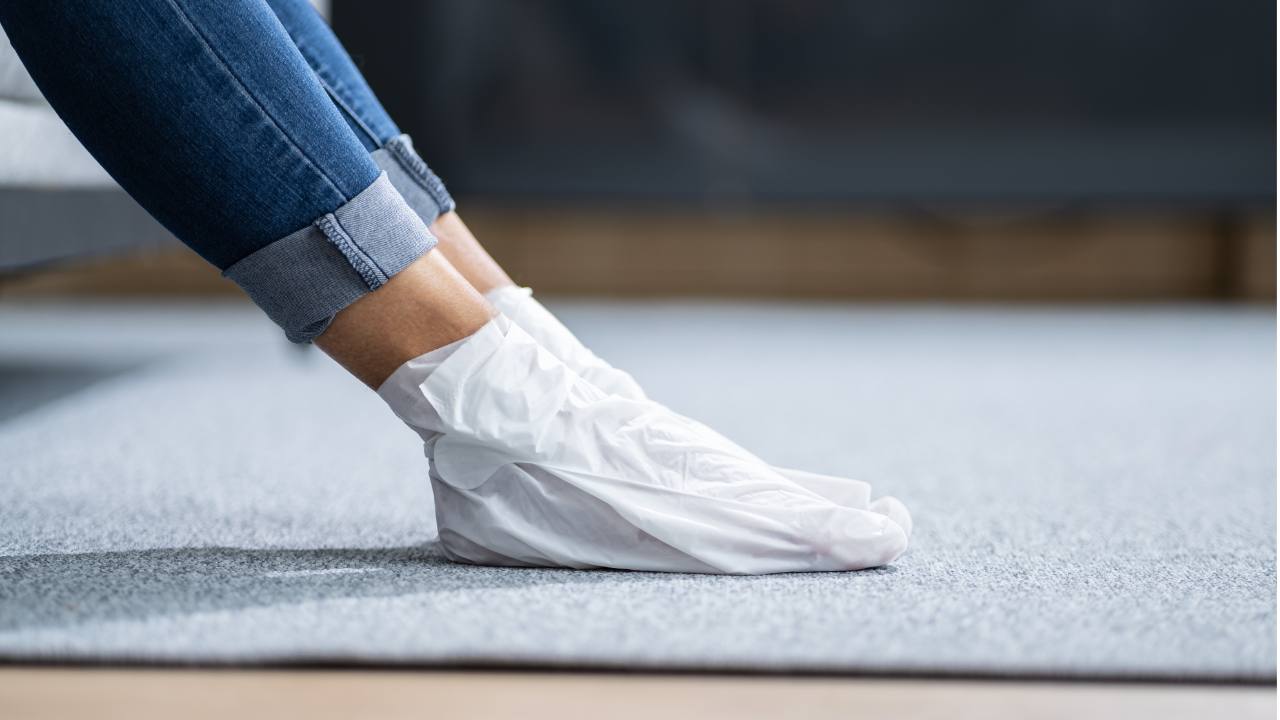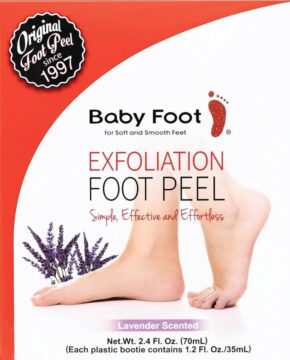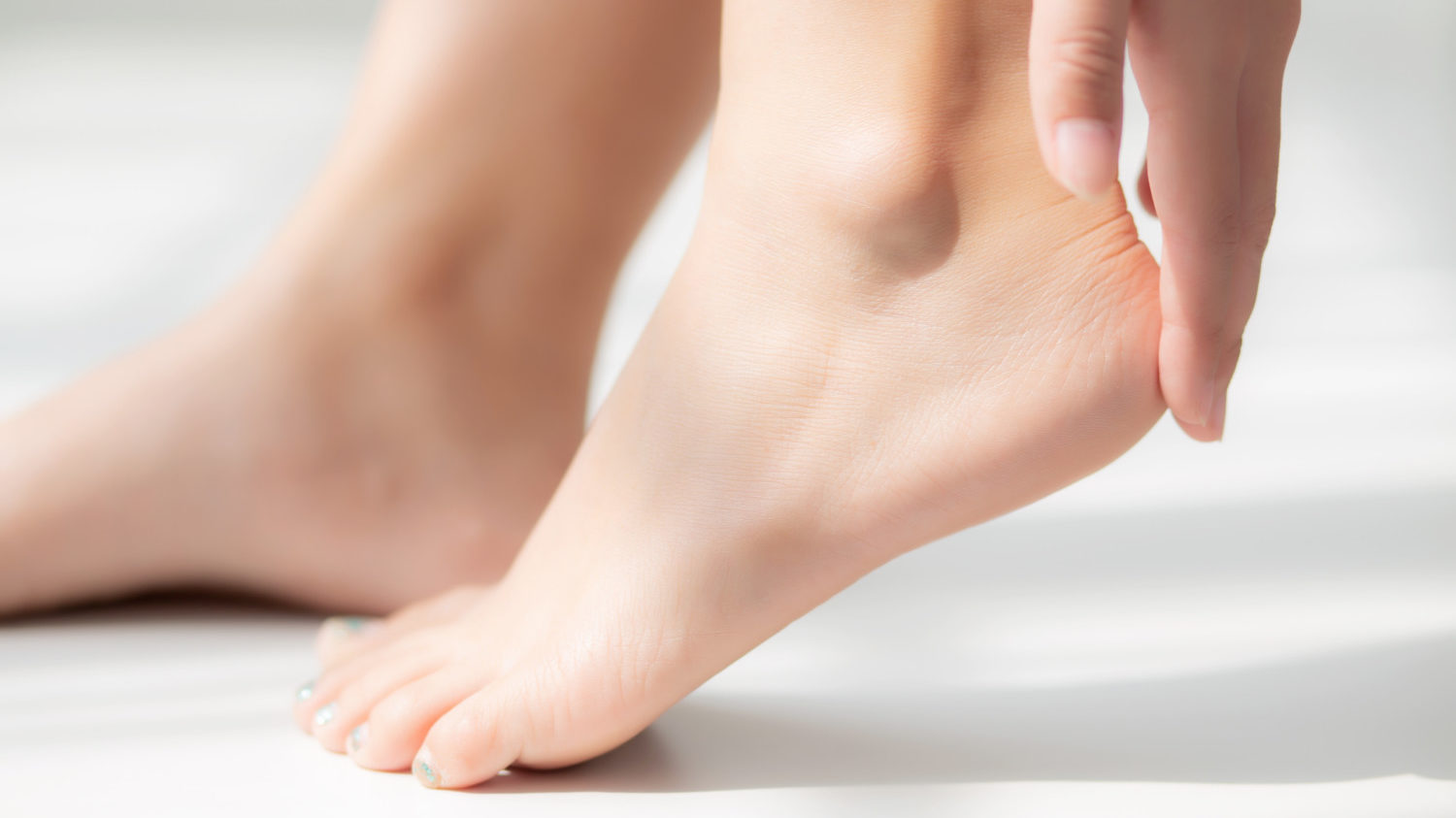The products and services mentioned below were selected independent of sales and advertising. However, Simplemost may receive a small commission from the purchase of any products or services through an affiliate link to the retailer's website.
After a summer of hikes and a winter of playing and coaching basketball, my feet had logged a whole lot of mileage and it was showing. But did these little piggies go get a pedicure? Nope. They stayed home, and, as part of a DIY spa day, I slipped them into a pair of $6 callus-removing booties I picked up at Walmart that boldly claimed they could soften my feet.
Frankly, I forgot all about the foot treatment as soon as I finished it. Then, a week later, the product delivered on its promise: Skin was peeling off my feet. Lots of skin. It was much like when you were in elementary school and you’d let glue dry on your hands so you could peel it off in a sheet — except that instead of Elmer’s, it was actual epidermis.
Was the foot peel experience satisfying? Yes, I’d be lying if I denied this. But are foot peels safe?
With sandal season approaching, Simplemost interviewed experts to find out how to best use foot peels at home and in between pedicures. Here’s what experts say about these callous-removing booties’ effectiveness and safety.
How Do Foot Peels Work?

After my own foot peel experience, I was quite shocked by how much skin was removed. My feet were just as soft as they are post-pedicure.
So, how peeling foot masks work and why does it take several days for the skin to start flaking off? The short answer: At-home products like Babyfeet are chemicals exfoliants for your feet. They can help speed up the process of shedding dead skin cells.
The most common ingredients in foot peels are alpha hydroxy acids (i.e. glycolic, lactic, and/or citric acid also known as AHAs) and beta hydroxy acids (i.e. salicylic acid known as BHAs), explains Dr. Rosana Paul, DO, an assistant professor of dermatology at Case Western Reserve University.
These types of acids are considered exfoliating acids, and when they seep into the top layer of your skin, they start breaking up desmosomes bonds that hold dead skin cells together. About five days after the at-home treatment, you can expect those dissolved, dead skin cells to start flaking off (in my case, it was in large pieces).
For most people, foot peels are safe, according to experts including Paul. In fact, she recommends Baby Foot, a product that’s been around since 1997, way before foot peels went viral on TikTok. Baby Foot contains glycolic and citric acid, which the company says helps dead skin cells peel, an alcohol to soften the dead cells. The salicylic acid, lactic acid and isopropyl, according to the company, “stimulate a flaking effect.”

Can You Safely Do Foot Peels?

While foot peels are generally considered safe for adults, anyone with open wounds or ulcers on the feet should avoid them, says Paul. Also, stubborn dry skin on the feet caused by psoriasis, athlete’s foot or eczema would worsen with the use of foot peels, says Dr. Larissa Rolim, DPM, a board certified podiatrist at Maverick Foot and Ankle Specialists in Irving, Texas.
Experts also say that those with diabetes should avoid using foot peels altogether because high blood glucose levels affect the body’s ability to heal wounds. Due to hormonal changes, individuals who are pregnant or breastfeeding should consult their doctor before using a peeling foot mask.
Dr. Malini Fowler, MD, FAAD, a board-certified dermatologist with Westlake Dermatology in San Antonio, Texas, also considers foot peels to be safe.
“Foot peels are a great way to exfoliate and remove dead, build up skin cells,” she says.
She cautions that just like facial peels, they shouldn’t be overdone. In general, foot peels can safely be done once a month, Fowler says.
“Too much exfoliation can lead to thinning of the skin, dryness, rash and cracks in the skin,” she explains. Fowler recommends looking for glycolic or salicylic acid in the ingredients of foot peels.
Alternatives To Foot Peels
If you’re already in the routine of exfoliating your feet with something like a sugar scrub, you might not need to use a peeling foot mask, Fowler says. Pumice stones can also be used to gently remove some calluses and thickened hard skin.
Other alternatives to foot peels include topical medications that are keratolytics (break up dead skin) and that include over-the-counter medications containing urea, lactic acid or salicylic acid, Paul says.
Have you ever tried a foot peel? What was your experience?
Foot peels: Experts weigh in on whether they’re safe originally appeared on Simplemost.com


